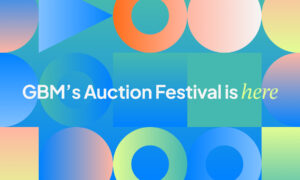Introduction
In recent years, Non-Fungible Tokens (NFTs) have taken the digital world by storm, revolutionizing the way we think about ownership, digital art, and collectibles. These unique digital assets have become a hot topic in the cryptocurrency and blockchain spaces. NFTs are changing the way we interact with digital content, making it possible to own and trade unique digital items securely and transparently. In this article, we’ll dive deep into the world of NFTs, exploring the different types and how they are reshaping various industries.
NFTs in the Art World
One of the most well-known uses of NFTs is in the art world. Artists and creators have embraced NFTs as a new way to monetize their digital works. These NFTs can represent digital paintings, illustrations, animations, and even virtual reality experiences. They can be sold on NFT marketplaces, with the ownership and provenance of the art being recorded on the blockchain.
Different types of NFTs
Let’s explore the various types of NFTs and how they are changing industries.
a. Digital Art NFTs
Digital art NFTs have gained immense popularity, with artists like Beeple selling digital masterpieces for millions of dollars. These NFTs allow artists to prove the ownership and authenticity of their works, making it easier to monetize their creativity.
b. Collectible NFTs
Collectibles in the form of NFTs are similar to traditional collectibles like trading cards or rare stamps. CryptoKitties, for example, allows users to collect, breed, and trade unique digital cats. The ownership and scarcity of these collectibles are guaranteed by blockchain technology.
c. Music NFTs
Musicians and artists can tokenize their music as NFTs. This gives them more control over their work, royalties, and how their music is distributed. Fans can also collect limited edition music NFTs, which often come with bonus content or experiences.
d. Video game NFTs
Video game NFTs have become increasingly popular, allowing players to own and trade in-game assets such as skins, characters, and virtual real estate. Games like Axie Infinity have popularized the concept of play-to-earn, where players can make a living by trading in-game NFTs.
e. Virtual Real Estate NFTs
Virtual real estate NFTs are plots of land or property in virtual worlds or metaverses. They can be used for various purposes, including building virtual businesses, hosting events, or just for speculative investment. Decentraland and The Sandbox are examples of platforms where virtual real estate NFTs can be acquired.
f. Domain Name NFTs
NFTs are not limited to digital content; they can also represent domain names. Owning a memorable domain name can be valuable, and NFTs make it easier to buy, sell, and transfer these digital assets securely.
g. Ticket NFTs
Event tickets can also be tokenized as NFTs, reducing the risk of counterfeiting and scalping. NFT-based tickets can also offer additional perks and experiences to the ticket holder.
h. Trading card NFTs
Similar to traditional trading cards, NFT trading cards represent unique characters, items, or assets in digital form. They can be collected, bought, and sold, and sometimes even used in games or virtual worlds.
i. Fashion NFTs
Fashion brands and designers have begun to experiment with NFTs to create digital clothing and accessories. These items can be worn in virtual worlds, gaming avatars, or social media profiles, allowing users to express their style in the digital realm.
j. Metaverse NFTs
Metaverse NFTs represent assets or properties within virtual worlds like Decentraland, The Sandbox, or Roblox. These assets can include virtual land, buildings, avatars, and even experiences. As metaverse adoption grows, the value of these NFTs is expected to increase.
How NFTs Work
To understand the different types of NFTs better, it’s essential to grasp how they work. NFTs operate on blockchain technology, typically using the Ethereum network, which is the most widely used platform for creating and trading NFTs. Here’s a simplified overview of the NFT creation and ownership process:
a. Minting: The process of creating an NFT is called minting. Creators use NFT marketplaces to mint their digital content into NFTs. During minting, creators specify details such as the name, description, and any royalties they wish to receive upon resale.
b. Ownership and Provenance: Once an NFT is minted, it is recorded on the blockchain. This ledger ensures the ownership and provenance of the NFT, making it transparent and immutable.
c. Transfer and Sale: NFTs can be bought, sold, and traded on various NFT marketplaces. When an NFT is transferred to a new owner, the blockchain ledger is updated to reflect the change in ownership.
d. Smart Contracts: Smart contracts are self-executing contracts with the terms of the agreement directly written into code. They automate various aspects of NFT ownership, including royalties to creators upon resale.
Benefits of NFTs
NFTs offer several advantages that have contributed to their widespread adoption:
a. Authenticity and Provenance: NFTs provide an immutable record of ownership and provenance, reducing the risk of counterfeit or stolen digital assets.
b. Creator Control: Creators can retain more control over their work and receive royalties upon resale, ensuring they benefit from the appreciation of their art or content.
c. Ownership and Transfer: NFTs can be easily transferred between owners, making them a convenient way to buy, sell, and trade digital assets.
d. Interoperability: Some NFTs are designed to be used across multiple platforms and applications, enhancing their versatility and value.
e. Fractional Ownership: NFTs can be divided into smaller fractions, allowing multiple users to co-own valuable assets.
f. Global Marketplaces: NFT marketplaces provide global access to a wide range of digital assets, creating a vibrant and diverse ecosystem.
NFT Marketplaces
Several NFT marketplaces have emerged as hubs for buying, selling, and trading NFTs. Each marketplace may specialize in certain types of NFTs or offer unique features. Here are some of the most popular NFT marketplaces:
a. OpenSea
b. Rarible
c. SuperRare
d. Decentralised Marketplace
e. NBA Top Shot
f. CryptoPunks
Axie Infinity Marketplace
Conclusion
Non-fungible tokens have opened up a world of possibilities across various industries, from art and gaming to collectibles and virtual real estate. They provide creators with a new way to monetize their digital content while offering users unique ownership experiences. As NFT technology continues to evolve and mature, it is likely to have a lasting impact on how we create, own, and trade digital assets



































